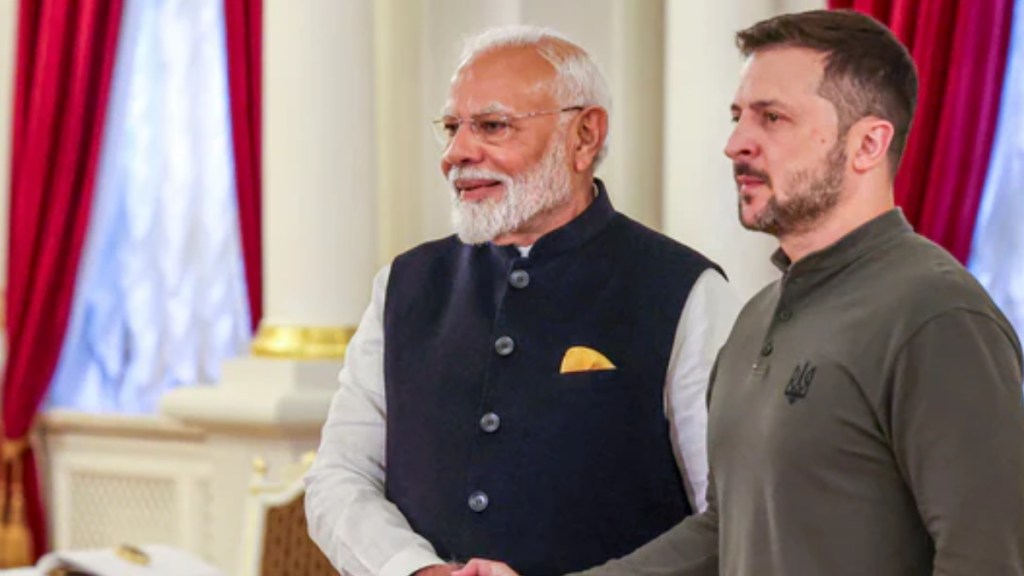Following his talks with Prime Minister Narendra Modi during his just concluded visit to Ukraine, in his interaction with the Indian media, President Zelensky highlighted discussions on forming a strategic alliance with India, particularly in cyber and aerospace domains, among other critical areas. This diplomatic approach signifies a deepening relationship between the two nations, positioning India as a significant strategic partner.
Reflecting on the Russian invasion of Ukraine, the conflict has notably introduced the widespread use & importance of cyberattacks, marking a first in the history of warfare. This hybrid cyber-warfare combines traditional battlefield tactics with a new digital dimension, showcasing the use of diversified cyberattack strategies. These include destructive operations targeting infrastructure, disruptive Distributed Denial-of-Service (DDoS) attacks aimed at temporarily neutralising infrastructure, intelligence gathering, and influence campaigns via social networks. Collectively, these strategies form a comprehensive toolkit for destabilising states in the modern cyber world, highlighting the evolving race to acquire advanced cyber arsenals.
Drones are playing a crucial role in this conflict, with both large and small drones being used extensively by both sides (Russia and Ukraine). While large drones like the Iranian-developed Shahed are used for deep strikes, smaller drones are employed for reconnaissance, artillery spotting, and even kamikaze missions. The conflict has pushed Russia to mass-produce drones and develop effective countermeasures against Ukrainian drone operations.
“Missile technology has also seen significant use, with both sides having access to advanced guided missiles. Russian Iskander and Anglo-French Storm Shadow missiles have been effective in striking deep targets, often located using drones. Anti-tank missiles, such as the Russian Kornet and the US-supplied Javelin, have also played a critical role, reminiscent of their use in past conflicts like the Yom Kippur War,” explains Prof (Dr) Nishakant Ojha, Advisor Cyber & Aerospace Security & Eminent Expert-Counter Terrorism.
Several Firsts in the Russia-Ukraine Conflict
The war in Ukraine represents a first in several areas, including the use of commercial space technology, large-scale drone warfare, and AI-driven strategies. Ukrainian civilians have actively participated by using apps to report Russian troop movements, while drones continuously stream real-time battlefield information. “Emerging technologies, such as AI, automated systems, and cloud services, have been pivotal in supporting Ukraine’s defence. Despite heavy reliance on Soviet-era air defences and traditional military assets, the integration of new technologies has been transformative, turning the conflict into a testing ground for innovative military systems,” explained sources in the defence and security establishment.
Based on the information available in the public domain, Ukraine’s reliance on Western technology and NATO support has become clear, particularly in the cyber and aerospace sectors, where its capabilities are still developing compared to those of the US., Israel, and Russia. Recently, “it was reported that a NATO member provided Ukraine with Underwater Killer Robots, or Sea-Drones, to disrupt enemy submarines and ships during the ongoing conflict. This suggests that Ukraine may be positioning itself as a mediator to distribute these advanced weapons and technologies to other nations,” said the sources in the defence and security establishment.
Future warfare
Autonomous and unmanned systems are increasingly seen as the future of warfare, with significant investments being made by many countries. While nations like the US., Israel, and others have already utilised UAVs in combat, countries such as China, Russia, and the US are now advancing highly autonomous systems. “Ukrainian forces often use commercial drones with high-resolution cameras for intelligence, surveillance, and reconnaissance, giving them a strategic advantage—technology provided by Western countries during the current war with Russia,” says Dr Ojha.
The framing of the war has also been significant. Russian President Vladimir Putin, when launching the invasion on February 24, 2022, referred to it as a “special military operation” rather than a war. This terminology was likely intended to limit the scope of the conflict and minimise its impact on the Russian public. However, as the war dragged on and Ukraine resisted, the Kremlin faced a dilemma. Declaring a full-scale war would allow Russia to mobilise more resources but would also mean admitting to the initial miscalculation. Despite not officially declaring war, Russia has taken steps towards a de facto wartime footing, including partial mobilisation and increased state control over the economy.
Strategically, according to experts India should now consider aligning more closely with Western countries, in military technology. India has been modernising its defence forces and investing in emerging technologies, including autonomous systems, with an annual defence budget allocation of US$25 billion for R&D and acquisitions up to 2030.
Why?
“Western defence companies have shown significant interest in the Indian market, which has become increasingly attractive post-pandemic,” Ojha adds.
Importance of SOSA
A key strategic move for India has been the signing of a non-binding Security of Supply Arrangement (SOSA) with the US Sharing his view with FinancialExpress.com, Dr Ojha opines: “This agreement ensures mutual support for priority procurement requests of critical defence resources. The US will provide assurances under its Defence Priorities and Allocations System (DPAS), while India will establish a government-industry code of conduct to prioritise US support. This initiative will definitely strengthen defence procurement and production under emergency conditions, positioning India as a key partner in the global defence supply chain. As the 18th SOSA partner of the US., alongside countries like Australia, Canada, and the UK, India is poised to benefit significantly from enhanced defence cooperation with the West.”

